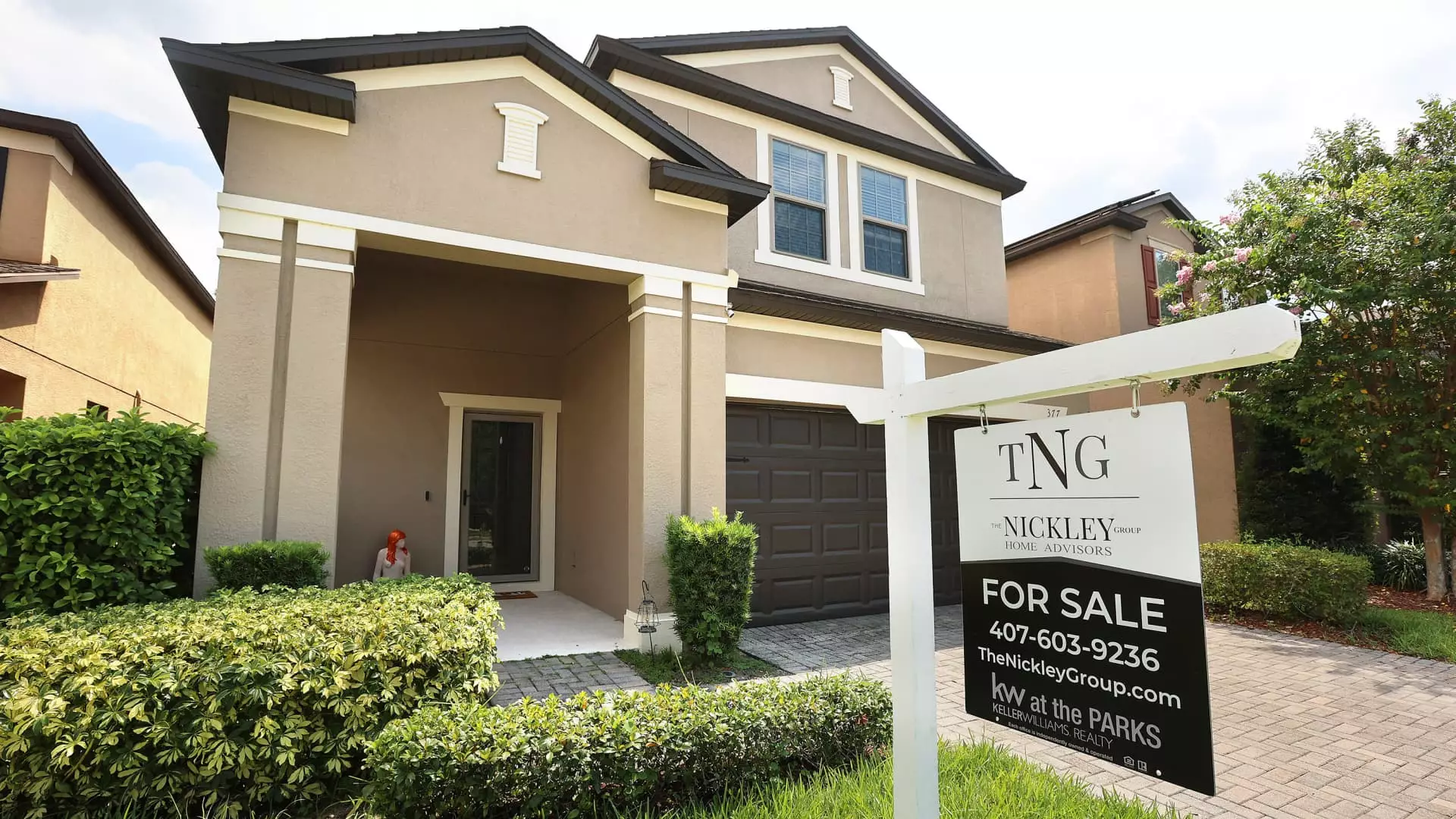In a surprising turn of events, mortgage interest rates have experienced a decline, reaching their lowest point in approximately two months. Yet, despite this favorable shift in rates, overall demand for mortgage applications has not followed suit. According to the Mortgage Bankers Association (MBA), nationwide mortgage application volume has decreased by 1.2% compared to the previous week, painting a discouraging picture for potential borrowers looking to enter the housing market.
The average interest rate for 30-year fixed-rate mortgages with loan balances of $766,550 or less has dipped from 6.93% to 6.88%, with the associated costs also declining. Joel Kan, the MBA’s vice president and deputy chief economist, noted that the drop in treasury yields—attributed to weaker consumer spending—has influenced these lowered rates. Despite this slight reprieve in borrowing costs, consumer sentiment about economic stability remains cautious, suggesting underlying uncertainties in the job market may be weighing heavily on potential homebuyers’ decisions.
Interestingly, while the overall activity in mortgage refinancing has waned by 4% in the latest week, it remains significantly elevated compared to the same time last year—up by 45%. This paradox indicates that while current interest rates are enticing, many homeowners may still be hesitant to act. Particularly noteworthy is the uptick in FHA refinance applications, which saw an eight percent increase, diverging from the broader trend.
As homeowners consider refinancing options, they are confronted with the complex realities of the housing market. The dynamics affecting buying and refinancing decisions are multifaceted, particularly as inventory remains historically low. Buyers currently face a scenario where increased supply does not necessarily translate to lower prices, indicating a continuing trend of inventory challenges even in the face of changing mortgage rates.
The demand for mortgages aimed at home purchases has settled, remaining relatively flat over the past week but showcasing a 3% increase year-over-year. The real estate market appears to be grappling with prolonged sales cycles; homes are not only taking longer to go under contract, but the prices are staying elevated, reinforcing buyer hesitation. This stagnant demand amidst falling rates illustrates a disconnect in consumer behavior, implying that lower rates alone may not be enough to motivate potential homebuyers.
Outlook and Financial Trends
As the week progresses, reports indicate a further drop in mortgage rates, supported by a separate survey from Mortgage News Daily, which highlights a 22-basis-point decrease in average top-tier mortgage rates over just four days. Such minor fluctuations, while encouraging for borrowers, reveal a broader trend of stabilizing rates within a narrow band, which may not incite significant movement in the market.
Ultimately, Matthew Graham, the chief operating officer at Mortgage News Daily, encapsulated the prevailing sentiment in the market, noting that bonds currently enjoy heightened demand, leading to lower interest rates. The mortgage landscape remains in a state of flux; while declining rates are beneficial, they have yet to inspire a robust response from consumers wary of economic uncertainties. For potential homebuyers and homeowners considering refinancing, it is essential to navigate these multifaceted dynamics carefully to make informed financial decisions.

